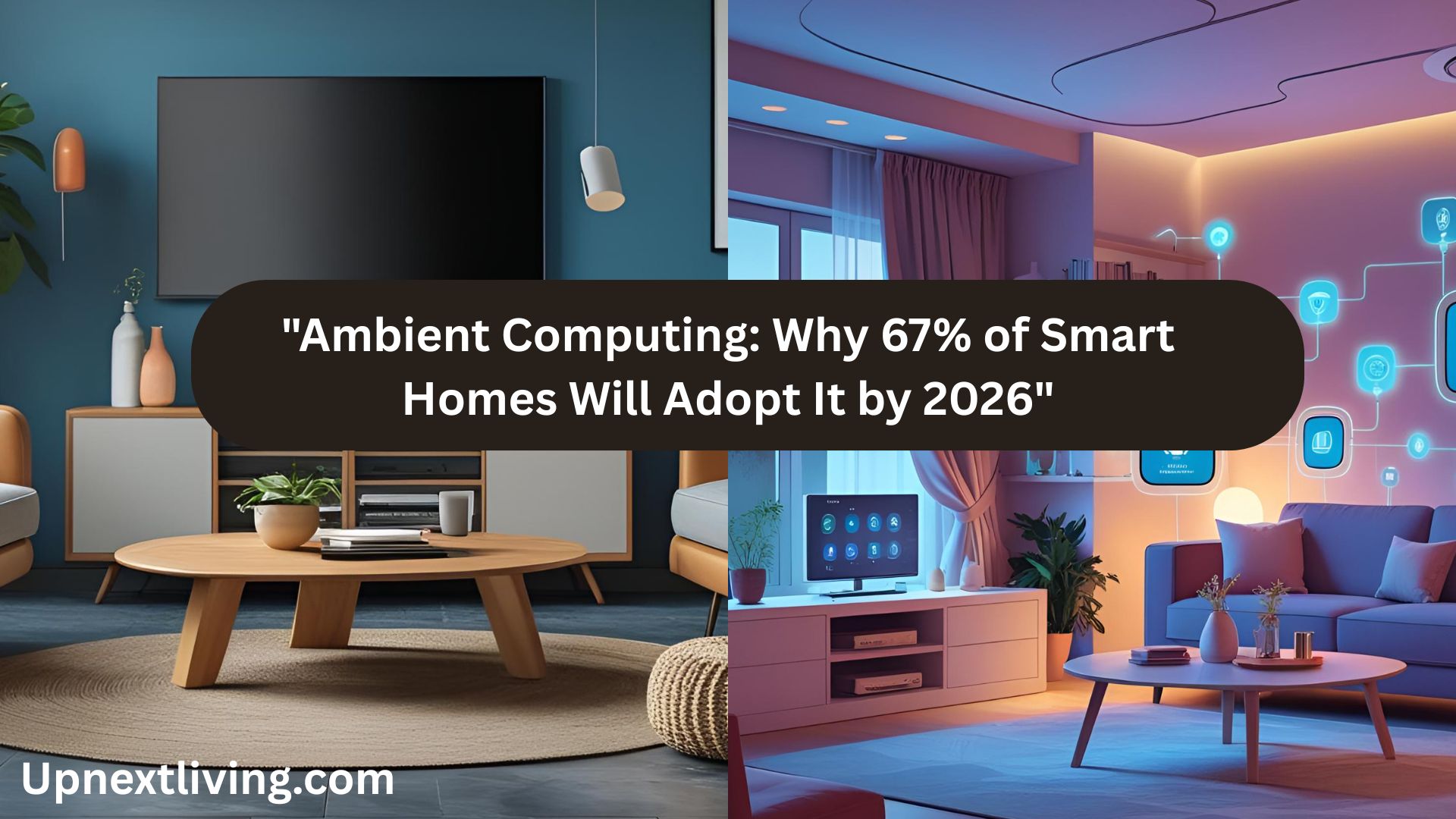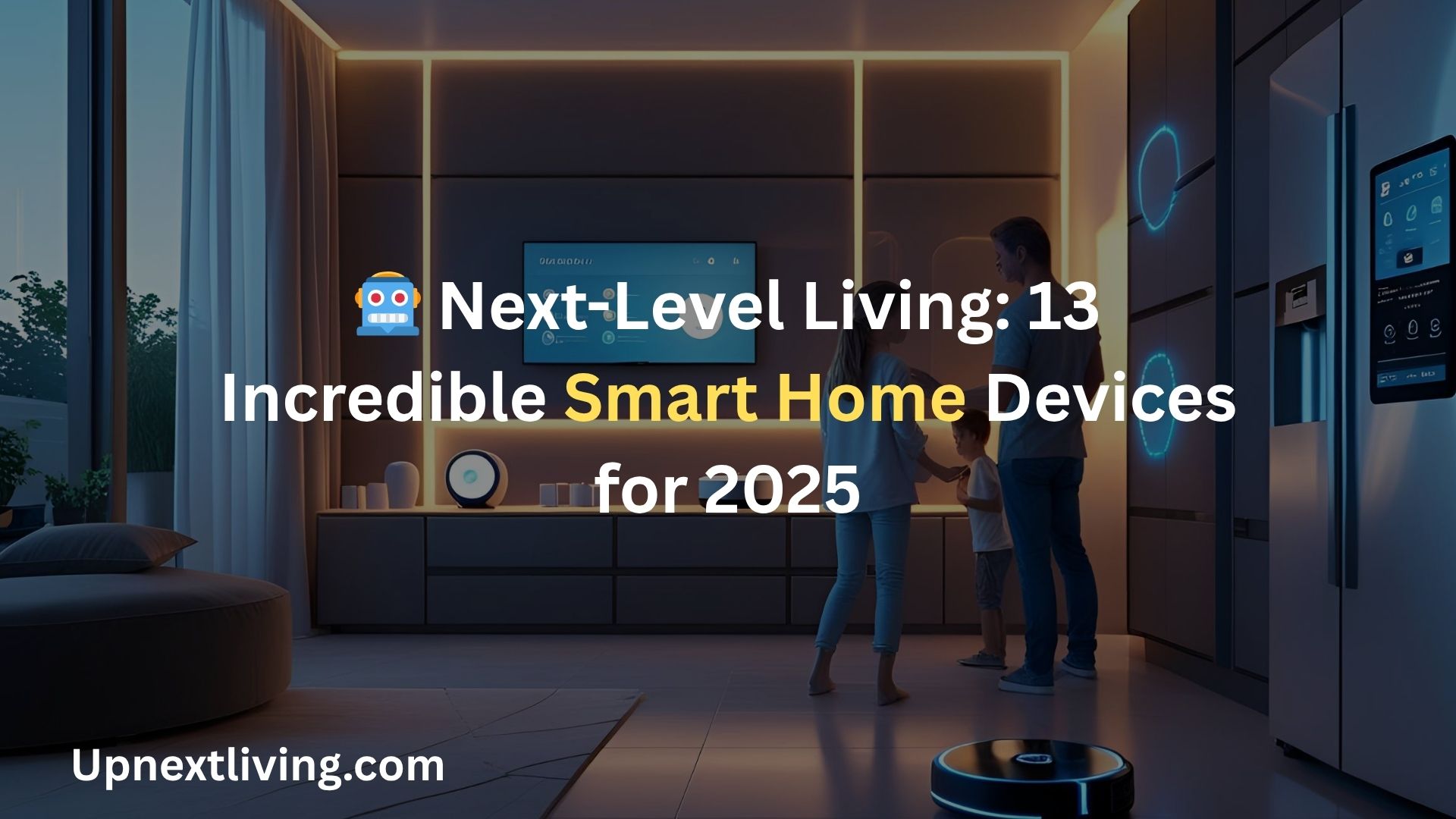Ambient Computing: Transforming Your Home Experience
As I explore the evolving landscape of technology in our daily lives, I’m often asked: Can our homes become more intuitive and responsive to our needs? The answer lies in the emerging world of ambient computing. It’s changing how we interact with technology.
Imagine walking into a smart home where the lighting adjusts automatically. Your favorite music starts playing as you enter your living room. This isn’t just a dream; it’s becoming real with connected home technology. It’s making our daily routines easier.

Key Takeaways
- Ambient computing is making homes more intuitive and responsive.
- Smart home devices are becoming increasingly integrated into daily life.
- Connected home technology is enriching the home experience.
- The future of home living is being reshaped by technology.
- Seamless interaction with technology is becoming a norm.
The Dawn of Invisible Technology
Invisible technology is changing our homes in big ways. It’s exciting to see how ambient computing is making devices less noticeable. Now, they blend into our daily lives more smoothly.
The Shift from Obvious to Ambient Systems
Our homes are changing how we use technology. We’re moving from obvious systems that grab our attention to ambient intelligence home systems. These systems blend into our lives without fuss.
This change is thanks to internet of things (IoT) for home and home automation solutions. They make our homes more intuitive and responsive.
Why 2023 Is the Breakthrough Year
So, why is 2023 a big year for ambient computing? It’s because of fast progress in IoT technologies and more use of ambient computing. This has led to new home automation solutions.
These solutions are making our homes more comfortable, safe, and energy-smart. It’s a big leap forward.
Ambient Computing for Home: The Latest Developments
Recent advancements in ambient computing have changed how we live at home. Smart home technology has made our lives more automated and efficient.
These new developments bring big tech wins. For example, AI and machine learning have made automated home devices smarter. They learn our habits and preferences, making our homes more personalized and effective.
Recent Technological Breakthroughs
One major leap is in better sensors and IoT devices. These gadgets talk to each other smoothly, forming a strong smart home ecosystem. Smart thermostats adjust the temperature based on our daily plans. Smart lights change color and brightness with the time of day.
How Today’s Systems Differ from Previous Generations
Today’s ambient computing systems are a big step up from before. They’re designed to work well together, unlike older systems. Now, devices from different brands can connect easily, creating a unified integrated smart home technology system.
Also, controlling our smart homes is now easier thanks to better interfaces and voice control. This makes it simple for anyone to manage their devices, no matter their tech skills.
Major Industry Announcements Reshaping Home Environments
The world of ambient computing is buzzing with new ideas from big names like Google, Amazon, and Apple. They’re changing how our homes work and connect. Our homes are getting smarter and more connected thanks to their innovation.
Google’s New Ambient Computing Initiative
Google has launched a new project to make smart homes even better. It aims to make our homes more intuitive and seamless. This means our homes will be more responsive and tailored to us.
Some key features of Google’s initiative include:
- Enhanced voice control capabilities
- Improved device interoperability
- Advanced AI-driven automation
Amazon’s Latest Ambient Home Ecosystem
Amazon has also made big moves in ambient computing. It’s updated its smart home ecosystem. Now, Amazon’s Alexa platform works better with more devices, making our homes more connected.
Apple’s Vision for the Ambient Home
Apple wants to make our homes seamless and secure. It’s updated HomeKit to make our lives easier. Now, we can automate our homes in new ways.
| Company | Initiative | Key Features |
|---|---|---|
| Ambient Computing Initiative | Enhanced voice control, device interoperability, AI-driven automation | |
| Amazon | Smart Home Ecosystem Updates | Expanded Alexa platform, increased device integration |
| Apple | HomeKit Updates | Seamless ecosystem, enhanced security, expanded automation capabilities |
These big announcements are changing our homes and setting the stage for a future where ambient computing is common. As we explore connected home tech, the possibilities are endless and exciting.
Emerging Startups Disrupting the Connected Home Space
New startups are changing how we live in our homes. They bring fresh ideas to the world of smart homes. These new ideas are making our homes better and opening up new possibilities.
Innovative Companies to Watch
Several startups are leading in the internet of things (IoT) for home field. SmartThings and August are at the forefront with their advanced home tech. They make managing our homes easier and more connected.
Other startups are working on voice control and AI for home care. These innovations are making our homes safer, more comfortable, and energy-efficient.
Recent Funding and Acquisition News
The connected home area is seeing a lot of investment and deals. Startups working on new home automation solutions are getting big funding. This includes companies improving home security and energy use.
Big tech companies are also buying up promising startups. This helps them grow their smart home offerings. It brings in new talent and speeds up the development of smart home tech.
As the field grows, startups will be key in shaping our future homes. With their new ideas and investor support, they’re set to make a big difference in the IoT for home world.
How Internet of Things (IoT) Is Evolving for Seamless Home Integration
IoT technology is changing fast, making our homes more connected and automated. As we add more smart devices, it’s key to make them work together smoothly. I’m excited to see how IoT is turning our homes into efficient, connected spaces.
The growth of IoT isn’t just about adding more gadgets. It’s about building a smart home ecosystem where everything works together. This means we need new ways for devices from different makers to talk to each other.
New IoT Standards and Protocols
New IoT standards and protocols are vital for seamless home integration. These rules help devices from different brands talk to each other well. This makes for a more integrated smart home technology experience.
| Protocol | Description | Benefits |
|---|---|---|
| Matter | A new standard for IoT interoperability | Enhanced device compatibility, simplified setup |
| Thread | A mesh networking protocol for IoT devices | Improved network reliability, reduced latency |
| Z-Wave | A wireless home automation technology | Low power consumption, secure data transmission |
Matter Protocol: The Game Changer for Home Devices
The Matter protocol is changing the IoT world by making devices from different brands work together. This means automated home devices from various makers will work seamlessly. It will make our smart homes better.
As we look ahead, using Matter and other new IoT standards will be key for smart homes. I’m hopeful these changes will make our homes more integrated, efficient, and easy to use.
Real-World Applications Transforming Daily Life
Ambient computing is changing our daily lives in big ways. It makes our lives easier, more efficient, and fun. Let’s look at how it’s impacting our daily routines.
Health and Wellness Monitoring Advancements
Ambient computing helps us keep an eye on our health. With smart home devices, we can watch our vital signs and sleep patterns. It can even spot health problems early.
For example, some connected home technology systems check the air quality and alert help if we fall. This is great for seniors or those with disabilities.

| Health Monitoring Features | Benefits | Examples |
|---|---|---|
| Vital sign tracking | Early detection of health issues | Smartwatches, fitness trackers |
| Sleep pattern monitoring | Improved sleep quality | Sleep sensors, smart mattresses |
| Fall detection | Emergency response | Wearable devices, smart home sensors |
Energy Management Innovations
Ambient computing is changing how we use energy at home. With smart home devices, we can use less energy and save money.
For example, some connected home technology systems adjust lights and temperature for us. This saves energy and makes our homes more comfortable.
Accessibility Improvements Through Ambient Systems
Ambient computing is also making homes more accessible. With ambient computing for home, people with disabilities can control their space easily. They can use voice commands or gestures.
For instance, some smart home devices work with voice assistants. This helps people with mobility or dexterity issues manage their homes better.
In conclusion, ambient computing is making a big difference in our lives. It helps with health monitoring, energy use, and making homes more accessible. The benefits are clear.
Privacy Concerns and Industry Responses
As we use more ambient computing, privacy worries grow. The internet of things (IoT) for home makes our homes more connected. But this connection also brings big privacy issues. It’s key to tackle these worries to see how the industry is reacting.
Recent Data Security Incidents
Recently, we’ve seen many data security problems with IoT devices. For example, hackers have found ways to get into smart home devices, stealing user data. This shows we need strong security in home automation solutions.
Companies are now under a lot of pressure to keep user data safe. They must protect our information.
New Privacy-Focused Features and Protections
Companies are creating new privacy features and protections. They’re using better encryption and secure data storage. These steps help keep user data safe and private in our connected homes.
Also, tech leaders are making data policies clearer. This lets users control their personal info better. This move towards openness and user control is a big step in solving privacy issues with IoT for home.
Consumer Adoption Trends and Market Growth
I’ve seen a big jump in people using ambient intelligence home systems. This shows a move towards a more connected life. As people get used to smart home tech, the market is coming up with new ideas.
Latest Market Research Findings
Recent studies show the ambient computing sector is growing fast. A top research firm says the smart home market will hit $146.3 billion by 2025. It will grow 13.6% each year from 2020 to 2025.
This growth comes from people wanting convenience, saving energy, and better home security. Voice assistants and smart speakers are key to this growth. They act as the main control for many smart homes. So, companies are working on better voice tech to meet this need.
| Segment | 2020 | 2025 |
|---|---|---|
| Smart Speakers | $4.3 billion | $13.4 billion |
| Smart Thermostats | $1.2 billion | $3.8 billion |
| Smart Lighting | $1.5 billion | $4.2 billion |
Demographic Shifts in Smart Home Technology Users
There’s a big change in who uses smart home tech. It’s not just tech-savvy people anymore. Now, more older adults and families with young kids are using it too.
For instance, smart devices help keep older adults safe and make homes more accessible. Families use them to keep an eye on and control their homes better.
The key demographic trends include more people with incomes over $75,000 using smart homes. Older adults are also showing more interest. And, smart home devices are becoming more popular in cities.

Conclusion: The Future of Ambient Home Experiences
Technology is changing how we live, making our homes smarter. The smart home ecosystem is growing fast. Big names like Google, Amazon, and Apple are leading the way.
I’ve looked into the latest in ambient computing. This includes new tech and startups changing the connected home scene. The Internet of Things (IoT) is key, making devices work together smoothly.
Our homes will soon be able to monitor our health, manage energy, and be more accessible. But, we must also think about privacy. Luckily, companies are working to solve these problems. Er.Faisal Qureshi for upnextliving.com
FAQ
What is ambient computing, and how does it work in a home setting?
Ambient computing makes technology a part of our daily lives. It’s about making things easy and natural. In homes, it means using smart devices and IoT to make living spaces connected and automated.
How does ambient computing differ from traditional smart home systems?
Ambient computing focuses on making things seamless and easy. It’s not just about controlling devices from afar. It’s about creating a system that learns and adapts to you.
What are some examples of ambient computing devices and systems?
Examples include smart speakers, thermostats, lighting, and security systems. These devices work together to make your home smart and connected.
How does the Matter protocol impact ambient computing and smart home devices?
The Matter protocol is a new standard for IoT devices. It lets devices from different makers talk to each other easily. This makes your smart home more integrated and ambient.
What are some of the benefits of ambient computing in the home, such as energy efficiency or accessibility?
Ambient computing offers many benefits, like saving energy and making homes more accessible. For example, it can help people with disabilities control their homes more easily.
How do industry leaders like Google, Amazon, and Apple contribute to the development of ambient computing?
Leaders like Google, Amazon, and Apple are pushing ambient computing forward. They’re making new products and services that make our homes smarter and more intuitive.
What are some of the emerging trends and technologies in ambient computing that I should be aware of?
New trends include AI, machine learning, and edge computing. These advancements are making smart homes more advanced and integrated. They’re shaping the future of ambient computing.



